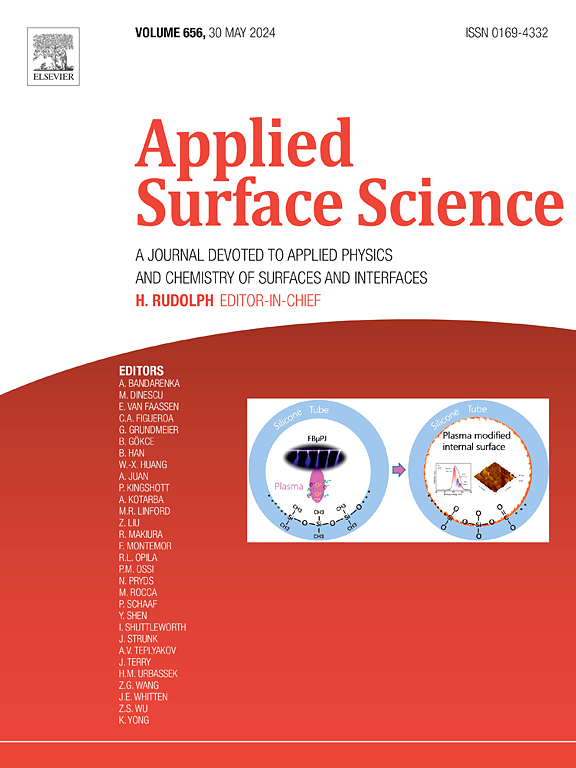液态金属印刷二维IGZO薄膜:通过竞争性氧化控制成分和增强器件性能
IF 6.3
2区 材料科学
Q2 CHEMISTRY, PHYSICAL
引用次数: 0
摘要
在这项研究中,我们创新地使用液态金属合金打印方法制备了具有几纳米和可调成分的二维IGZO超薄膜。我们系统地研究了In-Ga-Zn液态合金的组成与二维IGZO薄膜组成的关系,并阐明了可能的掺杂机理。结果表明,表面膜的组成主要由氧化生成的吉布斯自由能决定。重要的是,在液态InZnGa合金的氧化过程中,Zn和Ga具有强烈而相似的竞争氧化行为,导致了InZnGa合金氧化皮中Ga2O3和ZnO的偏析。在这种情况下,我们通过控制Zn和Ga的微掺杂水平来实现二维IGZO薄膜的成分定制。此外,本研究还发现,增加薄膜中Zn含量会降低带隙宽度,增加通道电流,并呈现电导率和载流子迁移率增加的趋势。相反,Ga含量的增加导致二维IGZO薄膜的电性能明显下降。本研究证明了液态金属印刷在二维材料和光电子器件制造中的优越性。本文章由计算机程序翻译,如有差异,请以英文原文为准。

Liquid metal printing of 2D IGZO films: Composition control via competitive oxidation and enhanced device performance
In this study, we innovatively fabricated 2D IGZO ultrathin films with several nanometers and tunable compositions using a liquid metal alloy printing method. We systematically studied the relationship between the composition of In-Ga-Zn liquid alloys and the composition of 2D IGZO films and clarified the possible doping mechanism. It was found that the surface film composition was primarily governed by the Gibbs free energy generated from oxide formation. Importantly, Zn and Ga possess a strong and similar competitive oxidation behavior in the oxidation process of liquid InZnGa alloy, leading to the segregation of Ga2O3 and ZnO in the oxide skin of InZnGa alloy. In this case, we control the micro doping level of Zn and Ga to realize the composition tailoring of 2D IGZO films. Additionally, this study also reveals that increasing the Zn content in the film reduces the band gap width, increases channel current, and shows a trend where conductivity and carrier mobility increase. In contrast, the increases of Ga content results in an obvious decline of electrical performance for 2D IGZO films. This study demonstrates the superiority of liquid metal printing in the fabrication of two-dimensional materials and optoelectronic devices.
求助全文
通过发布文献求助,成功后即可免费获取论文全文。
去求助
来源期刊

Applied Surface Science
工程技术-材料科学:膜
CiteScore
12.50
自引率
7.50%
发文量
3393
审稿时长
67 days
期刊介绍:
Applied Surface Science covers topics contributing to a better understanding of surfaces, interfaces, nanostructures and their applications. The journal is concerned with scientific research on the atomic and molecular level of material properties determined with specific surface analytical techniques and/or computational methods, as well as the processing of such structures.
 求助内容:
求助内容: 应助结果提醒方式:
应助结果提醒方式:


